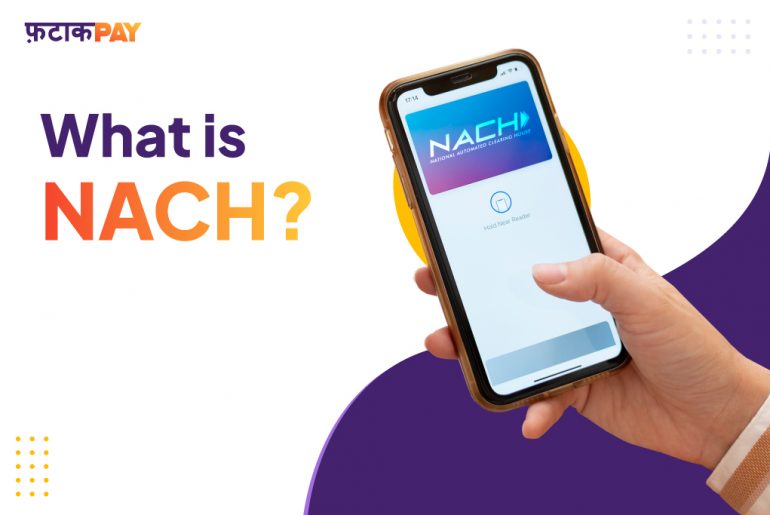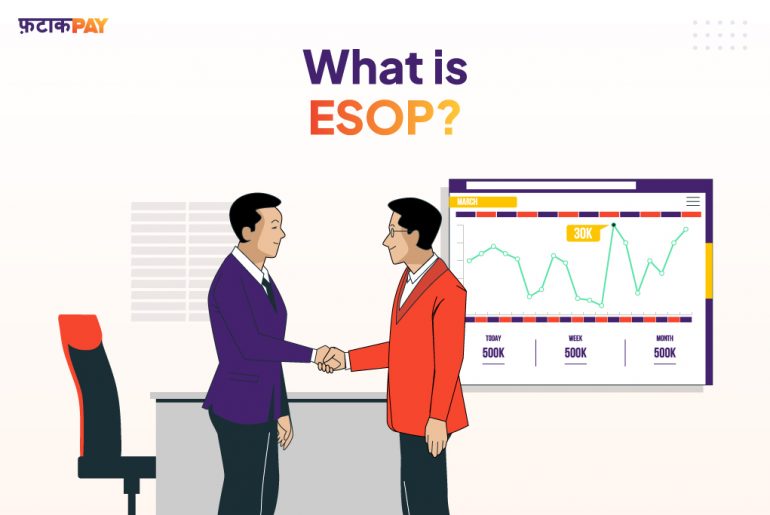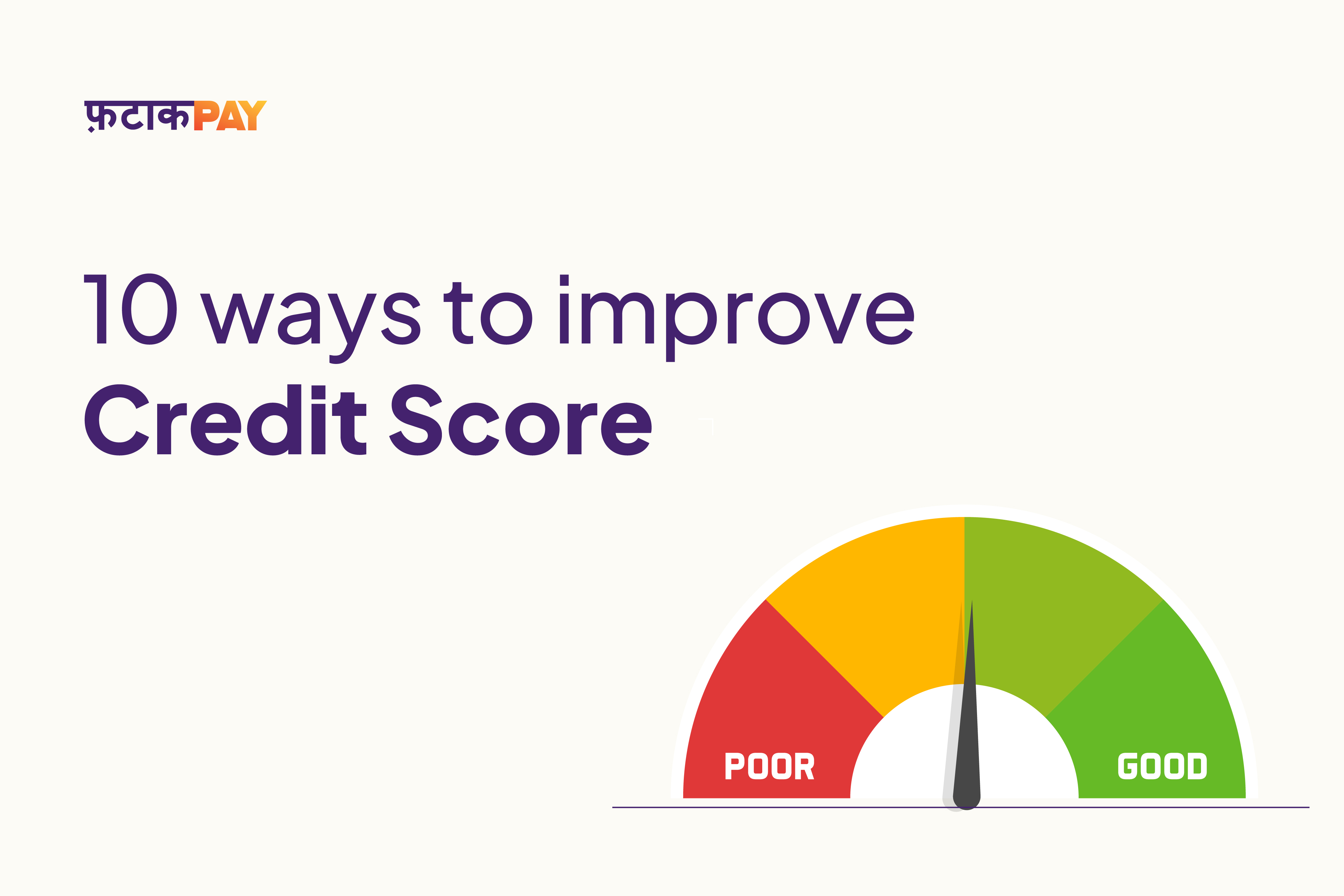Introduction to NACH:
The National Automated Clearing House (NACH) is the full name of this system, which was developed by the National Payments Corporation of India (NPCI). NACH makes it simple to transfer money electronically across banks.
The word “automated” in the NACH full form also indicates what the system’s main purpose is because it works best for frequent or repetitive payments. Additionally, Aadhaar-linked transactions are supported. NACH is a safe system with numerous levels of data validation in addition to being scalable.
If you have a bank account, you can use the NACH mandate to authorise payments to be taken directly out of your account. These could be EMIs on a loan, credit card payments, utility bills, SIP contributions, or insurance premiums.
NACH promotes the government’s financial inclusion initiatives by being accessible every day of the year.
Types of NACH:
The electronic transmission of funds can be facilitated by two different NACH mandate types:
1. NACH Debit
NACH debit is intended to simplify for organisations the process of collecting recurring payments like EMIs, invoices, etc. It facilitates the automatic deduction of funds from a sizable group of clients in a single settlement. NACH debit transactions can also be tracked by organisations online.
2. NACH Credit
Businesses can make sizeable deposits directly into the bank accounts of a significant group of recipients using NACH credit. The high-value transactions carried out via a single system are under the management of a unit. The NACH credit facility can be used by corporations and other major organisations to pay out salaries, interest, etc.
Objectives of NACH:
For many ECS systems, NACH serves as a centralised system.
- It makes use of technology to provide a cutting-edge platform that can handle massive amounts of recurring payments.
- Electronic transaction regulations and procedures are simple to understand and applicable to all parties.
- It facilitates ACH transactions using both Aadhaar and mobile devices.
eNACH and eMandate:
Simply said, e-NACH and e-Mandate are systems that help customers and businesses manage regular payments. Both produce the same effects, however they differ slightly in terms of structure.
On the one hand, NPCI, which includes more than 40 banks, facilitates e-NACH. On the other hand, only a small number of banks offer e-Mandates, which are controlled by individual banks. If you chose to use e-NACH, you would have to fill out an online form on the website of your bank and have it approved by the receiving bank. By completing a one-time transaction for authorization on the merchant website, you can directly set up an e-mandate.
What is the process of availing NACH?
You can go to the bank’s website and choose to fill out the NACH mandate form to use NACH services. Once you have entered the information, you would
get sent to the webpage of the final bank. Here, you must use your net banking credentials to authenticate your request. After checking the account number, the bank would decide whether to accept it or not. The mandate is confirmed upon acceptance, allowing for the scheduling of subsequent transactions. The UMRN, a number, would be given to you.
What is UMRN?
‘Unique Mandate Reference Number’ is what the acronym UMRN stands for, and it’s connected to the formation of your NACH mandate. When you create your mandate, the NACH system immediately generates it. Using this, you may track the details of your mandate afterwards and change or remove them.
Features and benefits of NACH mandate:
For Consumers:
- Makes it simpler to manage regular payments due to the automation of the method
- As transactions can be settled in a single day, it saves time.
- There is no need to keep track of the due dates for each recurrent payment because the money is auto-debited.
- It is user-friendly due to quick cancellation and easy access.
- You can authenticate your transfer request using NACH using simply your net banking credentials.
- The procedure is secure and safe.
For Organisations:
- High volumes of cheque payments no longer need to be cleared thanks to the online NACH mandate.
- It saves time since approving a large number of beneficiaries quickly allows for the transfer of funds.
- Increased consumer satisfaction as a result of simple bill payment
For Banks:
- Improved client relations as a result of quicker payment acceptance
- As there is no requirement for cheque clearance, it is less complicated and saves time.
- The service is easier to handle because of the online transactions.
- Fraud and theft are much less likely to occur.
- It is possible to eliminate the expense of invoicing.
- Zero chance of late payments
What is NACH form?
You must complete a form known as the NACH mandate form in order to use the automatic, scheduled payment service provided by NACH. By completing the form and submitting a request, you grant the bank permission to periodically debit your account for a predetermined length of time.
Additionally, the recipient account examines the NACH form and agrees to permit the automatic withdrawal of funds from your account.
NACH charges:
For e-mandates, the sponsor bank and the destination bank are both responsible for paying the processing cost, and the destination bank is also responsible for paying the penalty if the mandate is not processed within ten working days.
NACH Mandate cancellation:
When a NACH mandate is cancelled, the associated automatic debit instruction is also removed. These debit instructions may be for paying insurance premiums, utility bills, or other expenses. The NACH mandate can typically be cancelled online through most institutions. To void a mandate, utilise the NACH mandate cancellation form.
About FatakPay:
FatakPay provides virtual credit facilities for all. It’s available on your phone and caters to your everyday needs in both online and offline formats. Payments are done seamlessly through UPI/QR codes. The solution provides an almost zero cost, free, quick, transparent and secure way to transact in a multilingual format with a Scan Now, Pay Later facility and easy repayment options.
Link to FatakPay App: https://link.ftkp.in/2uSI/dkasgvnf
To better understand how digital payment systems work together, you can also read more about what is upi and what is net banking to see how modern banking makes recurring payments faster, safer, and more convenient.
}}
}






